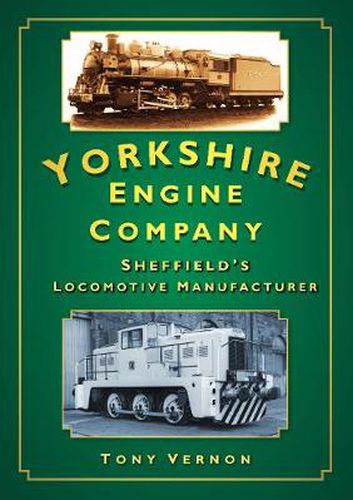Readings Newsletter
Become a Readings Member to make your shopping experience even easier.
Sign in or sign up for free!
You’re not far away from qualifying for FREE standard shipping within Australia
You’ve qualified for FREE standard shipping within Australia
The cart is loading…






Drivers leaving the M1 at the Tinsley viaduct can still pass the buildings where the Yorkshire Engine Company constructed and repaired locomotives for a hundred years. Founded in 1865, the company outlived many of its competitors and despatched its last locomotives in 1965. Established by a group of local businessmen, technical expertise was provided by Archibald Sturrock, Locomotive Engineer of the Great Northern Railway, and Charles Sacr, Engineer of the Manchester, Sheffield & Lincolnshire Railway. As the initial orders from UK and Indian railways fell away, the company was forced to take orders from Russia, where payment was not always forthcoming. The company became a leading manufacturer of Fairlie locomotives and undertook financially disastrous experiments with the building of marine engines and tramway locomotives. By 1880, in spite of new orders from Indian railways, the business was put into liquidation and a new company formed. This book gives a history of the financial fortunes and experiments of the company and the men who ran it.
$9.00 standard shipping within Australia
FREE standard shipping within Australia for orders over $100.00
Express & International shipping calculated at checkout
Drivers leaving the M1 at the Tinsley viaduct can still pass the buildings where the Yorkshire Engine Company constructed and repaired locomotives for a hundred years. Founded in 1865, the company outlived many of its competitors and despatched its last locomotives in 1965. Established by a group of local businessmen, technical expertise was provided by Archibald Sturrock, Locomotive Engineer of the Great Northern Railway, and Charles Sacr, Engineer of the Manchester, Sheffield & Lincolnshire Railway. As the initial orders from UK and Indian railways fell away, the company was forced to take orders from Russia, where payment was not always forthcoming. The company became a leading manufacturer of Fairlie locomotives and undertook financially disastrous experiments with the building of marine engines and tramway locomotives. By 1880, in spite of new orders from Indian railways, the business was put into liquidation and a new company formed. This book gives a history of the financial fortunes and experiments of the company and the men who ran it.